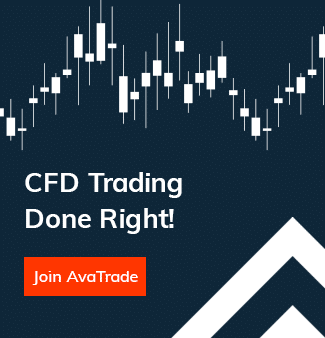
Cotton CFDs Trading
The creamy white coloured fibre known to us as cotton has been cultivated in India for over 6000 years. Produced from the cotton plant, it is ideally suited to warm, semi-tropical climates; its leaves are each divided into three parts, accompanied by cylindrical seeds where the cotton fibre blooms, later to be processed and used for cotton and cotton fibres.
Advantages for trading Cotton with Friedberg Direct
- Leveraged trading on Cotton CFDs
- Trade on a 17.5 hours a day market
- 24/5 technical support
- A Canadian regulated broker
- Both MT4 & MT5 trading platforms available
Cotton trading market
Cotton as a commodity has many features: it is strong, absorbent and durable, used to make clothing and fabrics, and is swiftly becoming the world’s most commonly used fabric for clothing manufacturing to date. With this, the demand for cotton is a substantial one.
Cotton trading takes place on the New York Board of Trade exchange (NYBOT) but also on other major exchanges, such as the Zhengzhou Commodity Exchange (ZCE) and Intercontinental Exchange.
Contract Specifications:
- Cotton trading hours: 02:00 to 19:19 (GMT)
- Minimum trade size: 10
- Contract size: 100 lbs
- Ticker symbols: COTTON#2
- Price Quote: cents per lbs.
- Tick size: $0.0001
What influences cotton prices
Primarily climate and weather patterns are what affect the price of this commodity, as with most agricultural underlying assets. Both floods and droughts will have a massive impact on crop yields, and should be worked in as a factor when looking to trade on cottons CFDs.
Cotton prices can also be influenced by competing textiles, such as its main competitor, wool, and some synthetic fibres, such as polyester. Polyester for example is much easier to obtain, as well as cheaper; and it could lower the price of cotton considerably – as occured during the 2003 cotton futures price move.
Main countries that contribute to the cotton market for cotton trading: in first place is China which produces 6,532 thousand metric tons; a close second is India that produces 6,423 thousand metric tons of; and U.S cotton producers come next with over 3,553 per year.
Countries that consume the most cotton are China with a USE domestic consumption of 35,500 (1000 480 lbs. bales) annually, India with 24,000 and Pakistan 10,200. These countries are said to consume the most cotton; however, most of their end products are then resold to Europe and across the world.
Understanding cotton trading
Remember to always trade on commodities whose key components you are able to keep abreast of, such as contract value, margin requirements and ticker symbol (for this example we will use this: COTTON#2 @ 70.39).
The value of the commodity contract is based on the current price of the market, which is multiplied by the actual contract size. For our example, we will say that a cotton contract equals the equivalent of 10,000 pounds multiplied by $0.7039 per pound. A price move from 70.39 to 72.24 would yield
($0.7224 – $0.7039) x 10,000 = $185 profit on a long position or an equivalent loss on a short one.
Start Trading CFDs with Friedberg Direct
Do you know which way the cotton markets will go? Then join us at Friedberg Direct and trade on cotton CFDs. Enjoy the best CFD trading experience with an industry leader!
Open a trading account now, or try our risk-free demo account.
Cotton Trading FAQs
- What makes the price of cotton change?
Cotton prices are primarily driven by weather. Floods and droughts can have a significant impact on the price of this agricultural commodity. There are some other factors that can influence the price, however, such as changing government regulations or the price of substitutes for cotton. For example, the price of cotton crashed in 2003 as polyester became the preferred material for many garments. The value of the U.S. dollar can also impact the price of cotton, and so can the price of oil since cheaper oil means cheaper polyester fabric.
- Should I trade cotton?
As is the case for many commodities, the price of cotton can be quite volatile. Rather than shying away from this volatility, traders could consider embracing it. Increased volatility can give traders an increased chance to make larger profits, especially when combined with the leverage available when trading cotton, however where there are rewards, there are also risks.
Cotton is also a good way to speculate on global growth. As the world’s population grows, so does its need for cotton, but at the same time, the amount of cotton grown can decrease as land is turned to growing food for the larger population. - How can I trade cotton?
Most cotton is traded through futures contracts or options. These may not be the best trading vehicles for many retail traders, however. A futures or options account is required, and the leverage on futures and options can be quite large. The initial investment for futures is also quite large. Both futures and options also suffer time decay, which must be accounted for in the trade. Arguably, a better way to trade cotton is through CFDs, which allow for exposure to the market and speculation on the price change in cotton, without any of the aforementioned concerns.
These FAQs, comments/analysis do not take into consideration your individual personal circumstances and trading objectives. Therefore, they should not be considered as a personal recommendation or investment advice. They are intended for educational purposes only. Past performance is not indicative of future results. There is no guarantee that the contents or instructions will result in profits or not result in losses.







